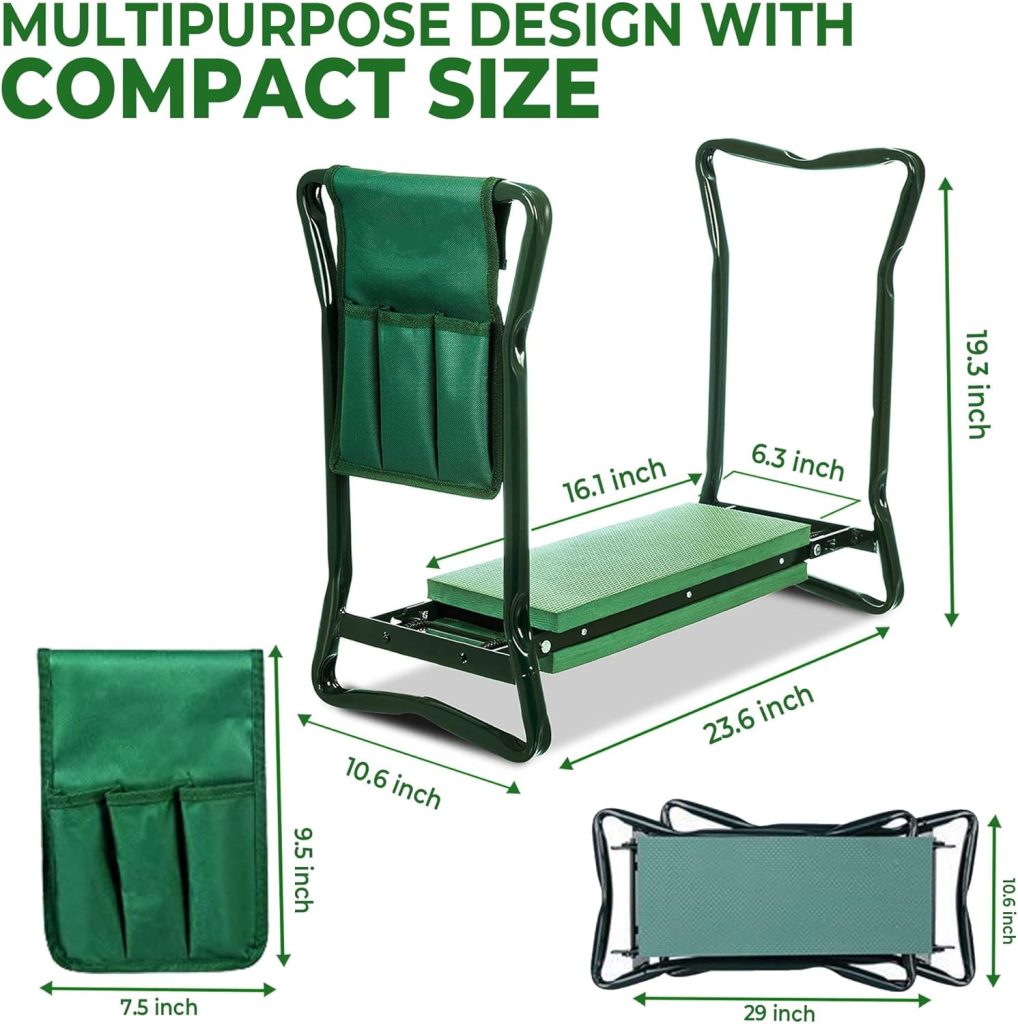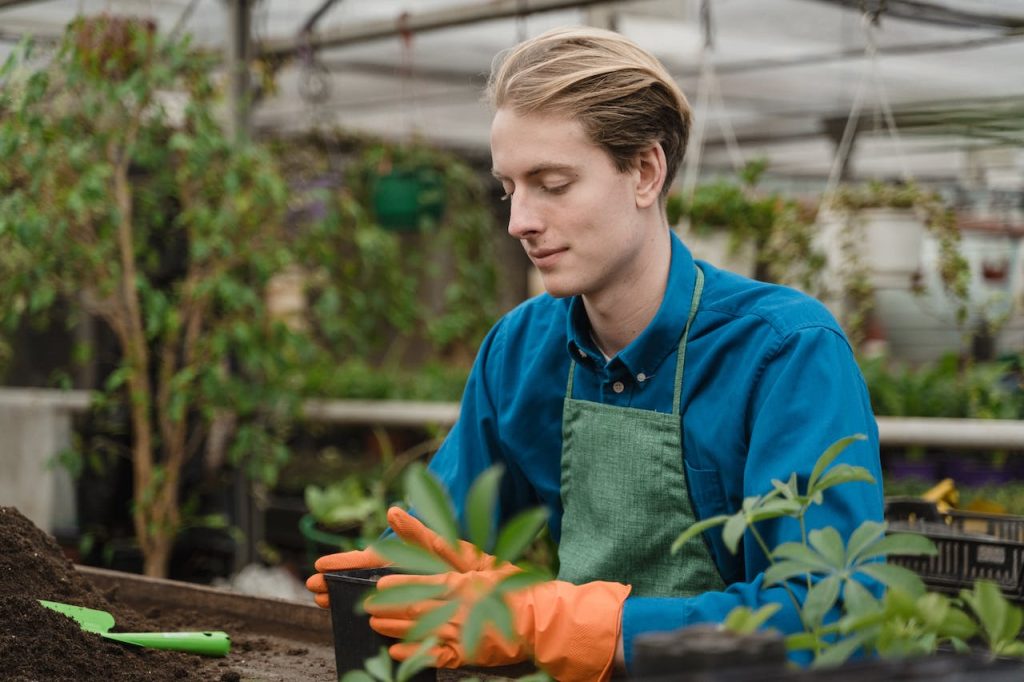Gardening Stool: Enhancing Your Gardening Experience
As a passionate gardener, I understand the joy and satisfaction that comes from nurturing plants and creating a beautiful outdoor / indoor natural space. However, gardening can also take a toll on our bodies, leading to strains and injuries. That’s where a gardening stool can make a significant difference. In this article, I will delve into the benefits of using a gardening stool, the risks of repetitive strains while gardening, and provide helpful suggestions to ensure a comfortable and enjoyable gardening experience.
Benefits of Using a Gardening Stool
- Relieves Strain on Joints and Muscles
Gardening often involves kneeling, squatting, and bending, which can strain our knees, back, and hips. Using a gardening stool provides a raised and supportive surface, reducing the pressure on these areas. It allows us to maintain a more comfortable and natural posture while working.
- Improves Comfort and Posture
With proper padding and ergonomic design, having a stool promotes better posture and distributes your weight evenly. It reduces the risk of developing back pain or discomfort, allowing you to spend more time enjoying your gardening activities.

- Enhances Efficiency and Productivity
Having a designated space to sit on while gardening eliminates the need for frequent breaks and allows you to work for longer periods without fatigue. By reducing the strain on your body, a gardening stool can help you accomplish more tasks efficiently.
- Provides Stability and Support
A sturdy stool also offers stability and support, especially when working on uneven surfaces or when reaching for plants at different heights. It ensures a secure base, preventing slips or falls and reducing the risk of accidents.
Jessie’s Top 3 Recommended Gardening Stools

H> Garden Kneeler and Seat
I love that this gardening stool has dual functionality because it works great as a bench and a kneeler (Great for weeding!) The handles on the sides make it really easy for me to get up from a kneeling position. Like I mentioned at the start of this post, the cushion on this stool is thick enough such that my joints don’t hurt even after extended periods!
Aimerla Foldable Garden Kneeler Seat Heavy Duty
I find this this is another close competitor in terms of the stool’s sturdiness and compactness. Like any of the gardening stools-cum-kneelers products here, this one is super easy to use and store. You’ll also be keen to know that this particular model can fit into a watersport’s backpack! I’ve bought these as gifts for my friends who are into RVs and camping, because this is a very versatile stool – you can easily store your phone or beer bottles in the side pockets too!


EAONE Garden Kneeler and Seat Foldable Garden Bench Stool with Soft Kneeling Pad
This is an amazing gift for the gardener in your life! Simply because this one comes with the gardening stool and a set of 6 gardening tools and a pair of gardening gloves. This gift will surely delight its receiver because the tool bag on each arm provides convenient storage for gardening tools. And the included tools are of high quality, exceeding expectations and comparable to those from quality garden centers.
Risks of Repetitive Strains While Gardening
- Common Gardening Injuries
Gardening activities often involve repetitive movements such as digging, weeding, and pruning. These actions can lead to strains, sprains, and overuse injuries in the wrists, elbows, shoulders, and back. It is important to be aware of the potential risks and take proactive measures to prevent such injuries.
- Impact of Repetitive Movements
Performing repetitive movements without adequate breaks or support can lead to muscle imbalances, joint stiffness, and inflammation. Over time, this can contribute to chronic pain and discomfort, limiting your gardening enjoyment.

- Importance of Proper Body Mechanics
Maintaining proper body mechanics is crucial in minimizing strain and preventing injuries. However, it can be challenging to maintain good posture and body alignment during extended periods of gardening. A gardening stool provides the necessary support and allows you to work in a more ergonomically sound position.
Suggestions for Using a Gardening Stool
- Choosing the Right Stool
When selecting a gardening stool, consider factors such as height adjustability, stability, and comfort. Look for a stool that suits your height and gardening needs, with features like a cushioned seat and sturdy construction.
- Incorporating Regular Breaks
It’s essential to take regular breaks to stretch, move around, and rest your body. Set intervals to stand up, walk, and perform gentle stretches to maintain flexibility and prevent stiffness.
- Stretching and Warm-up Exercises
Before starting your gardening session, incorporate stretching exercises to warm up your muscles. Focus on areas commonly engaged in gardening tasks, such as your lower back, shoulders, and wrists. This helps prepare your body for the physical demands of gardening.
- Maintaining Good Posture
Even in a sitting position, pay attention to your posture. Sit upright, aligning your back, shoulders, and neck. Avoid slouching or hunching forward, as this can strain your spine. Engage your core muscles for stability and support.

Conclusion
Incorporating a gardening stool into your gardening routine can significantly enhance your experience. It offers numerous benefits, including reduced strain on joints and muscles, improved comfort and posture, increased efficiency and productivity, and enhanced stability and support. By being mindful of the risks of repetitive strains while gardening and following the suggestions provided, you can enjoy a more comfortable and sustainable gardening journey.
FAQs
- Is a gardening stool suitable for all types of gardening tasks? A gardening stool is versatile and can be used for various tasks such as planting, weeding, and pruning. However, for activities that require extensive mobility or heavy lifting, it’s recommended to stand or use additional support.
- Can using a gardening stool prevent all gardening-related injuries? While having one can reduce the risk of strains and provide support, it’s important to practice proper body mechanics, take breaks, and use other gardening tools correctly to minimize the chance of injuries.
- Can I use a regular household stool instead of a designated gardening stool? Using a designated gardening stool is recommended as it is designed with features that specifically cater to the needs of gardeners, such as adjustable height, stability, and ergonomic design.
- Are gardening stools suitable for individuals with mobility issues? Yes, it can be beneficial for individuals with mobility issues, as they provide a stable and comfortable seating option. However, it’s always advisable to consult with a healthcare professional for personalized advice.
- How do I maintain my gardening stool for longevity? To ensure the longevity of your gardening stool, clean it regularly, store it in a dry and sheltered place, and inspect it for any signs of wear or damage. Follow the manufacturer’s instructions for maintenance and care.





